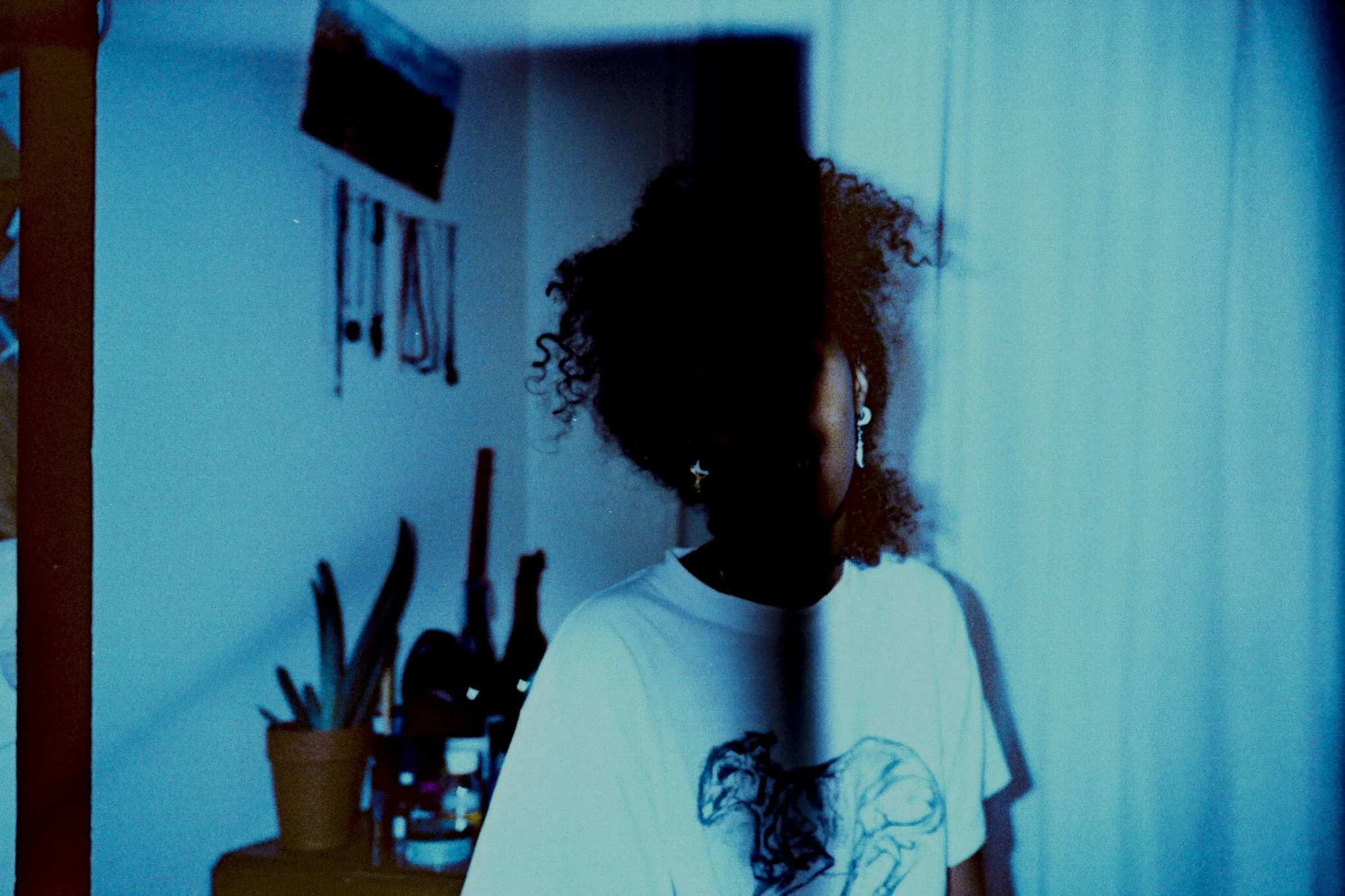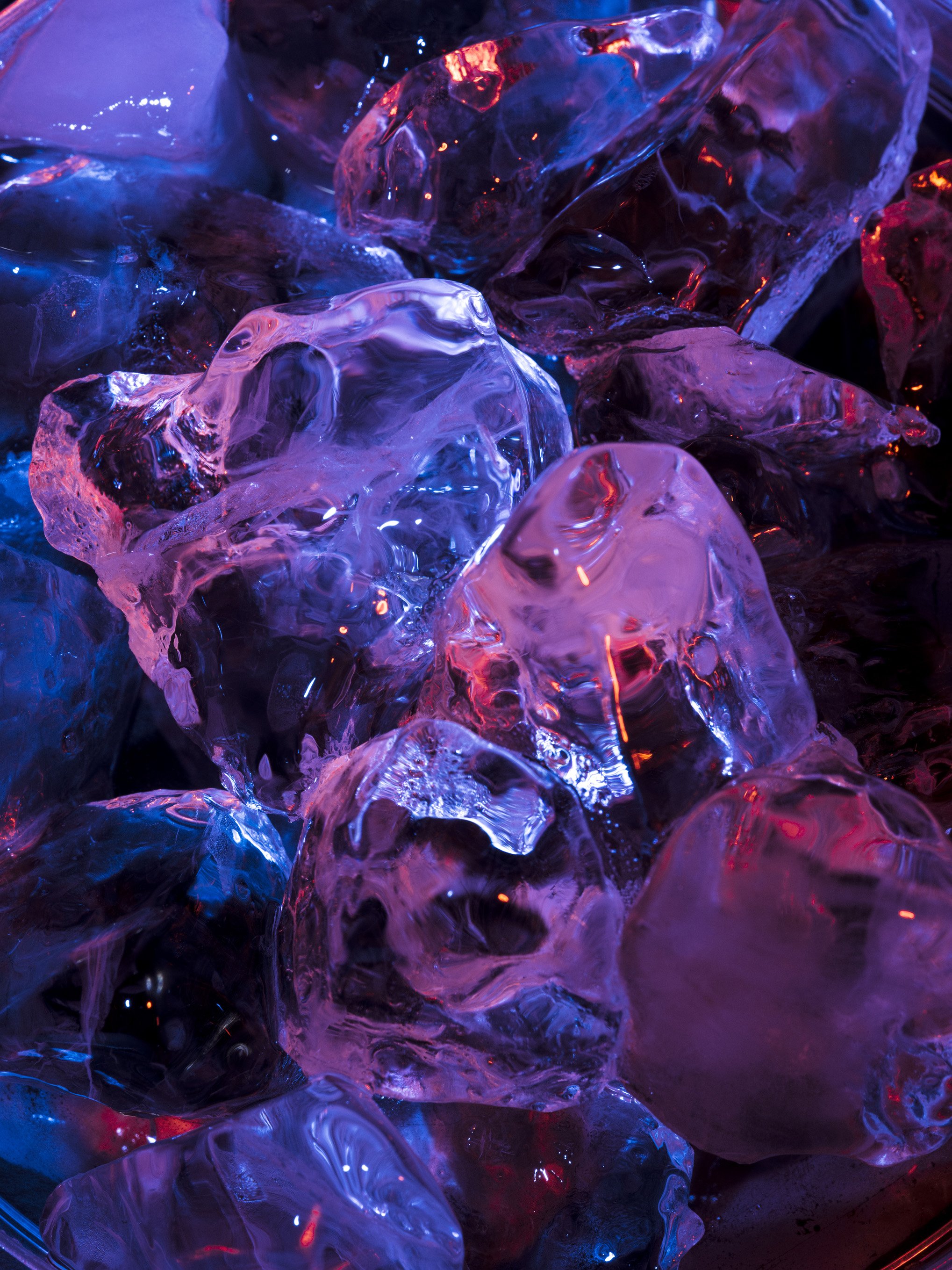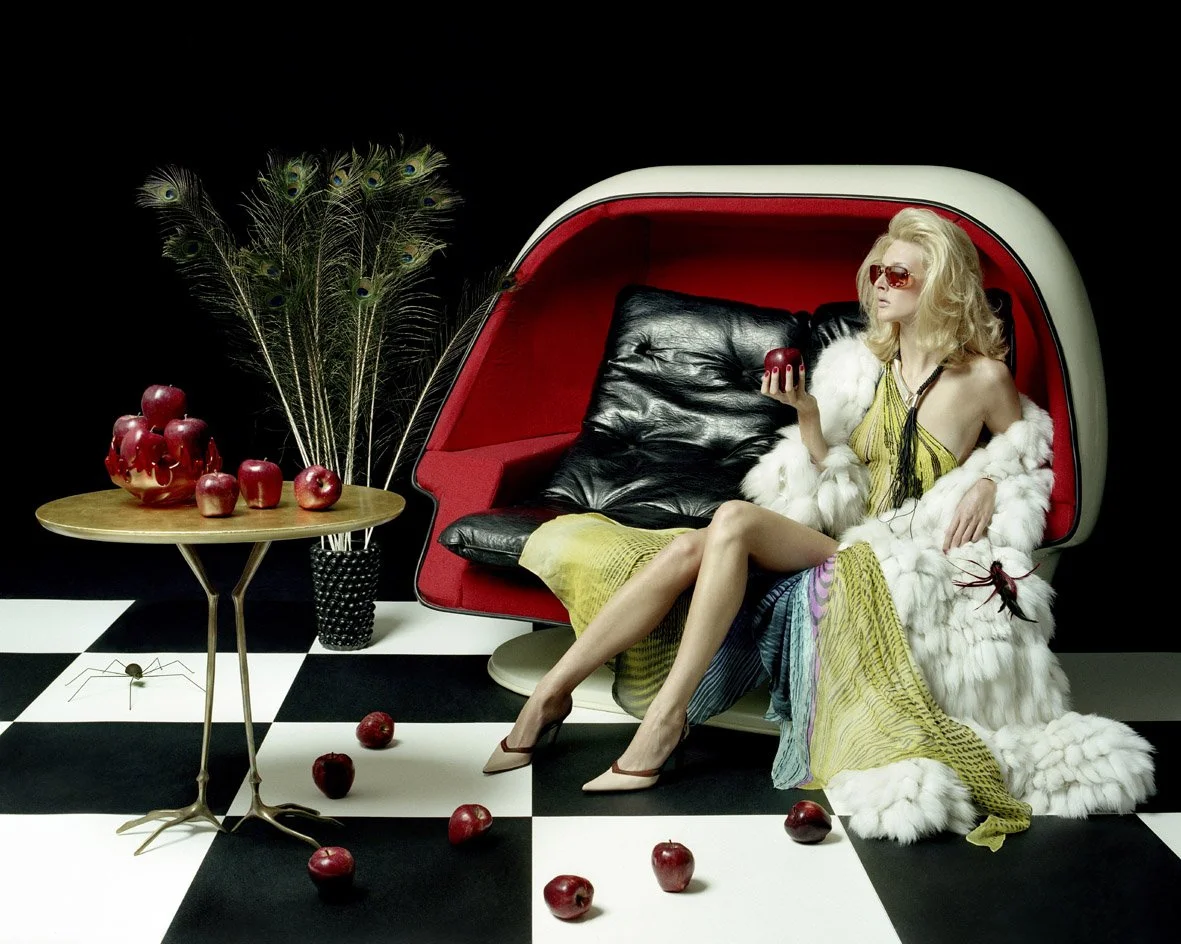
CAMERA meets ICP. Un archivio vivente | CAMERA – Centro Italiano per la Fotografia | Torino
CAMERA – Centro Italiano per la Fotografia | Torino
4. Juli – 14. September 2025
CAMERA meets ICP. Un archivio vivente
Procione a Central Park, New York City, 2019 © Lucia Buricelli
Ein Jahrzehnt visuelle Erzählkunst verdichtet sich zu einem lebendigen Archiv: "CAMERA meets ICP. Un archivio vivente" präsentiert fotografische Geschichten aus aller Welt – und schafft Raum für vielstimmige, fragmentarische Stadtchroniken.
Turin, aufgeladen mit Geschichte und Gegenwart, steht im Brennpunkt der Ausstellung "CAMERA meets ICP. Un archivio vivente". Über 10’000 Fotografien, aus den Linsen von 221 internationalen Talenten, reflektieren zehn Jahre intensive Auseinandersetzung mit der Stadt und ihren vielschichtigen Realitäten. Die Schau, kuratiert aus dieser gewaltigen Bilderflut, bietet einen pointierten Einblick in Themen wie Migration, urbanes Leben, Identität und die heikle Frage nach Zugehörigkeit.
Das Konzept des "lebendigen Archivs" zieht sich als konzeptioneller Faden durch die verschiedenen Präsentationsformen: von visuellen Landkarten über Postkartenbilder bis zu multimedialen Installationen. Besonders faszinierend sind die sieben individuellen Stimmen von Andrés Altamirano, Lucia Buricelli, Nastassia Kantorowicz Torres, Gianluca Lanciai, Deka Mohamed, Iva Sidash und Ashima Yadava, deren Projekte zwischen persönlicher Recherche und globaler Perspektive oszillieren.
Während Andrés Altamirano mit der Serie "Tejedoras" der Tradition des Webens als Kulturtechnik von K’iche-Gemeinschaften nachspürt und Lucia Buricelli das urbane Zusammenleben von Mensch und Tier festhält, richtet Nastassia Kantorowicz Torres die Linse auf das Vermessen und Räumen von ukrainischen Minenfeldern – eine Arbeit an der Sichtbarmachung kollektiver Verletzungen. Gianluca Lanciai dokumentiert die Ränder New Yorks und gibt den Prekären ein Gesicht; Deka Mohamed widmet sich der somalischen Diaspora in Italien und spinnt Erinnerung aus Familienalben und Collagen.
Iva Sidash gelingt mit "La casa di One Slipper" eine poetische Annäherung an das Schicksal ukrainischer Kriegsveteranen, während Ashima Yadava Nachbarschaft unter pandemischen Bedingungen in ein partizipatives Experiment verwandelt.
Die Ausstellung fragt nach dem Archiv als Prozess: nie abgeschlossen, nie neutral, immer geprägt von jenen, die schauen, auswählen und erzählen. So entsteht aus den Verschränkungen von Fremdem und Vertrautem ein Patchwork, das die Stadt als offene Bühne der Geschichten begreift – und Fotografie als Sprache, in der sich Gesellschaft ständig neu verhandelt.
VIyers - Contributi artistici di Krish Iyer e Mayura Iyer. Stampa a getto d'inchiostro d'archivio di grande formato con acrilici, 2020 © Ashima Yadava
Une décennie d'art narratif visuel se condense en une archive vivante : « CAMERA meets ICP. Un archivio vivente » présente des récits photographiques du monde entier et crée un espace pour des chroniques urbaines polyphoniques et fragmentaires.
Turin, chargée d'histoire et d'actualité, est au centre de l'exposition « CAMERA meets ICP. Un archivio vivente ». Plus de 10 000 photographies, prises par 221 talents internationaux, reflètent dix années d'étude intensive de la ville et de ses réalités complexes. L'exposition, organisée à partir de cette immense quantité d'images, offre un aperçu pertinent de thèmes tels que la migration, la vie urbaine, l'identité et la question délicate de l'appartenance.
Le concept d'« archive vivante » est le fil conducteur des différentes formes de présentation : des cartes visuelles aux images de cartes postales en passant par des installations multimédias. Les sept voix individuelles d'Andrés Altamirano, Lucia Buricelli, Nastassia Kantorowicz Torres, Gianluca Lanciai, Deka Mohamed, Iva Sidash et Ashima Yadava, dont les projets oscillent entre recherche personnelle et perspective mondiale, sont particulièrement fascinantes.
Alors qu'Andrés Altamirano retrace la tradition du tissage en tant que technique culturelle des communautés K'iche dans sa série « Tejedoras » et que Lucia Buricelli immortalise la cohabitation urbaine entre les humains et les animaux, Nastassia Kantorowicz Torres braque son objectif sur le déminage et le nettoyage des champs de mines ukrainiens, un travail qui vise à rendre visibles les blessures collectives. Gianluca Lanciai documente les marges de New York et donne un visage aux personnes en situation précaire ; Deka Mohamed se consacre à la diaspora somalienne en Italie et tisse des souvenirs à partir d'albums de famille et de collages.
Avec « La casa di One Slipper », Iva Sidash réussit une approche poétique du destin des vétérans de guerre ukrainiens, tandis qu'Ashima Yadava transforme le voisinage en une expérience participative dans le contexte de la pandémie.
L'exposition interroge l'archive en tant que processus : jamais achevée, jamais neutre, toujours marquée par ceux qui regardent, sélectionnent et racontent. Ainsi, l'entrelacement de l'étranger et du familier donne naissance à une mosaïque qui conçoit la ville comme une scène ouverte aux histoires – et la photographie comme un langage dans lequel la société se renégocie constamment.
Flex vive nel suo caravan da oltre sette anni all’interno di The Hole. Alle sue spalle, il complesso di edilizia popolare che alcuni suoi ex residenti chiamano ‘la prigione’, 2022 - 2023© Ginaluca Lanciai
Un decennio di arte narrativa visiva condensato in un archivio vivente: “CAMERA meets ICP. Un archivio vivente” presenta storie fotografiche provenienti da tutto il mondo e crea spazio per cronache urbane frammentarie e corali.
Torino, ricca di storia e presente, è al centro della mostra “CAMERA meets ICP. Un archivio vivente”. Oltre 10.000 fotografie, scattate da 221 talenti internazionali, riflettono dieci anni di intenso confronto con la città e le sue realtà complesse. La mostra, curata da questa enorme marea di immagini, offre una visione approfondita di temi quali la migrazione, la vita urbana, l'identità e la delicata questione dell'appartenenza.
Il concetto di “archivio vivente” è il filo conduttore che accomuna le diverse forme di presentazione: dalle mappe visive alle immagini su cartoline postali fino alle installazioni multimediali. Particolarmente affascinanti sono le sette voci individuali di Andrés Altamirano, Lucia Buricelli, Nastassia Kantorowicz Torres, Gianluca Lanciai, Deka Mohamed, Iva Sidash e Ashima Yadava, i cui progetti oscillano tra ricerca personale e prospettiva globale.
Mentre Andrés Altamirano, con la serie “Tejedoras”, ripercorre la tradizione della tessitura come tecnica culturale delle comunità K'iche' e Lucia Buricelli immortala la convivenza urbana tra uomo e animale, Nastassia Kantorowicz Torres punta l'obiettivo sulla misurazione e lo sgombero dei campi minati ucraini, un lavoro che mira a rendere visibili le ferite collettive. Gianluca Lanciai documenta i margini di New York e dà un volto ai precari; Deka Mohamed si dedica alla diaspora somala in Italia e tesse ricordi da album di famiglia e collage.
Iva Sidash, con “La casa di One Slipper”, riesce a realizzare un approccio poetico al destino dei veterani di guerra ucraini, mentre Ashima Yadava trasforma il vicinato in condizioni pandemiche in un esperimento partecipativo.
La mostra interroga l'archivio come processo: mai concluso, mai neutrale, sempre influenzato da coloro che guardano, selezionano e raccontano. Dall'intreccio tra estraneità e familiarità nasce così un patchwork che concepisce la città come un palcoscenico aperto di storie e la fotografia come un linguaggio in cui la società si rinnova costantemente.
Autoritratto, 2018 © Deka Mohamed
A decade of visual storytelling condensed into a living archive: ‘CAMERA meets ICP. Un archivio vivente’ presents photographic stories from around the world – and creates space for polyphonic, fragmentary city chronicles.
Turin, steeped in history and the present, is the focus of the exhibition ‘CAMERA meets ICP. Un archivio vivente’. Over 10,000 photographs, taken by 221 international talents, reflect ten years of intensive engagement with the city and its multi-layered realities. Curated from this enormous flood of images, the show offers a pointed insight into topics such as migration, urban life, identity and the delicate question of belonging.
The concept of the ‘living archive’ runs like a conceptual thread through the various forms of presentation: from visual maps and postcard images to multimedia installations. Particularly fascinating are the seven individual voices of Andrés Altamirano, Lucia Buricelli, Nastassia Kantorowicz Torres, Gianluca Lanciai, Deka Mohamed, Iva Sidash and Ashima Yadava, whose projects oscillate between personal research and a global perspective.
While Andrés Altamirano traces the tradition of weaving as a cultural technique of K'iche communities in his series ‘Tejedoras’ and Lucia Buricelli captures the urban coexistence of humans and animals, Nastassia Kantorowicz Torres focuses her lens on the surveying and clearing of Ukrainian minefields – a work that aims to make collective injuries visible. Gianluca Lanciai documents the margins of New York and gives a face to the precarious; Deka Mohamed focuses on the Somali diaspora in Italy and weaves memories from family albums and collages.
Iva Sidash's ‘La casa di One Slipper’ is a poetic approach to the fate of Ukrainian war veterans, while Ashima Yadava transforms neighbourhoods under pandemic conditions into a participatory experiment.
The exhibition questions the archive as a process: never complete, never neutral, always shaped by those who look, select and narrate. The intertwining of the foreign and the familiar creates a patchwork that understands the city as an open stage for stories – and photography as a language in which society is constantly renegotiated.








































































